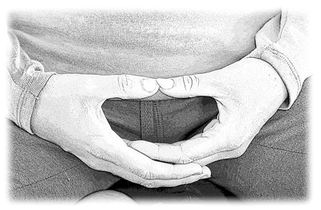
Meditation Instruction
|
Please refer to our calendar for information about our periodic Meditation Instruction sessions, held live at Dharma Field
Meditation Instruction is designed to address question regarding meditation practice. New and seasoned practitioners are welcome. Free and open to anyone. No registration required. This offering is in-person (at Dharma Field). Please refer to our online resources below if you aren't able to visit the center. 60–90 minutes. No need to register. Please arrive 10 minutes early. Loose comfortable clothing recommended. |
OTHER WAYS TO LEARN MEDITATION
When available, we highly recommend attending instruction at Dharma Field. If this is not an option to you, check the following:
|
|
Audio instruction
The following audio instruction is offered at no charge, but of course, donations are gratefully received.
INSTRUCTIONS (by Steve Hagen) Please note: Talks #4, #5 and #6 are recommended after establishing and maintaining regular daily meditation for a few years. INSTRUCTIONS (by Dainin Katagiri)
posture guide
The illustrations and descriptions below are excerpted from Meditation Now or Never, by Steve Hagen.
Cross-Legged Sitting Postures There are three options in sitting cross-legged: Half-lotus posture, full-lotus posture or Burmese posture. Hand-crafted meditation cushions and mats are available through Dharma Field. Half Lotus Posture With your knees upon the mat, bring either your left or right heel in close to your cushion, leaving your foot directly upon the mat.Place your other foot on top of its opposite thigh. This gives you a good stable posture. Half-lotus posture
Full Lotus Posture An even more stable and balanced posture—although one requiring more flexibility—is the full-lotus posture. Begin by placing your first foot on its opposite thigh instead of on the mat. Then place other foot on top its opposite thigh. Full-lotus posture
Burmese Posture As in the half-lotus posture, bring one foot in close to the cushion, but then place the second foot on the mat in front of the first leg rather than on its opposite thigh. Make sure that both knees are supported, and not floating above the mat. Burmese posture
Posture for Chair Sitting If you choose to meditate on a chair, sit with your feet comfortably close together and flat on the floor. It’s important to have your thighs nearly level with the floor—knees slightly lowered. This will maintain the lumbar curve in your spine, giving you good back support and allowing you to breathe properly. Do not lean against the back of the chair; the base of your spine should either not touch the back of the chair or only rest very lightly against it. The upper part of your back should not touch the back of the chair at all. Most chairs are sloped toward the back; unfortunately, this will cause some slouching and make it impossible for you to assume a posture that allows you to breathe properly. You need a chair that does not throw you toward the back. Chair-sitting posture
Kneeling (seiza) Posture In seiza posture, kneel on the mat with a cushion between your ankles. As in all sitting postures, your knees will be touching the mat. If this is uncomfortable, try putting a second cushion on top of the first, or consider using a kneeling bench (sometimes called a seiza bench). Kneeling (seiza) posture
Standing Posture To take the standing meditation posture, place your feet about a fist apart at the heels. Straighten up your spine. Push the back of your head towards the ceiling until your face is vertical—facing neither downward toward the floor nor upward toward the ceiling. Standing posture
Hand placement While seated, put your hands, open and palms up, in your lap in front of you. Touch the tip of your left index finger to the base of your right index finger just where it joins the palm. Using this as a reference point, lay the fingers of your left hand over the corresponding of your right, palms facing upward. Gently bring your thumbs tips together until they barely touch. Detail of hand gesture while seated
While standing, gently make a fist with your left hand, but enclose your thumb inside. Now enclose your left fist inside your right hand and bring your hands against your body just below your sternum. Your forearms should be parallel to the floor. Detail of hand gesture while standing |














